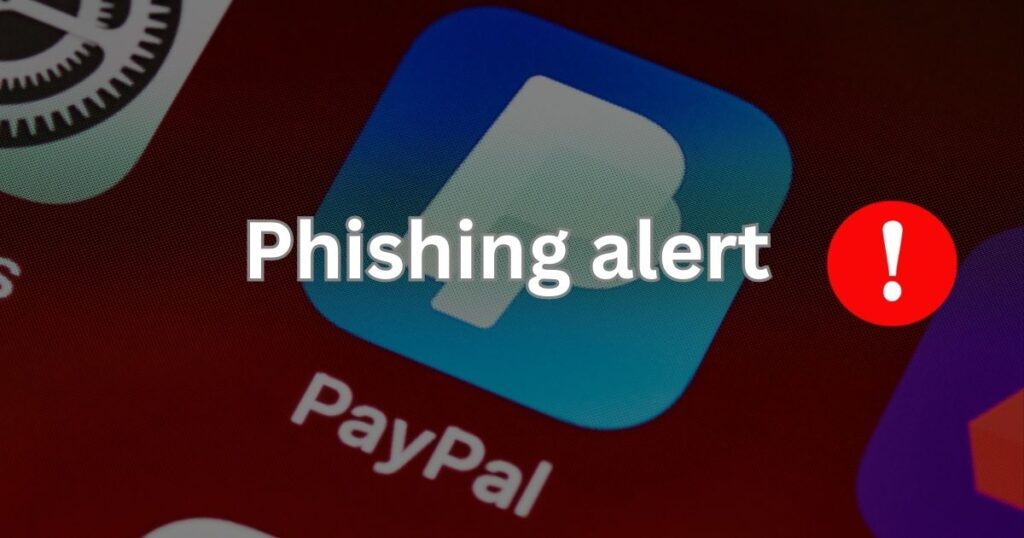
Online scams and phishing attempts have reached new levels of sophistication, making it imperative for individuals to be on high alert and protect themselves from falling prey to cybercriminals. Recently, I had a personal encounter with a deceptive PayPal phishing email that appeared strikingly authentic. In this article, I will recount my experience, shedding light on the characteristics of these scams and providing essential tips to help you recognize and steer clear of such malicious attempts.
My Experience with a Deceptive PayPal Phishing Email:
Just a few days ago, while going through my inbox, I came across an email that appeared to be from PayPal. As an avid PayPal user, the subject line caught my attention: “Urgent Action Required: Account Security Alert.” My heart skipped a beat as I read the opening line, which stated that my PayPal account had been compromised and unauthorized transactions had occurred.
Feeling a sense of panic and urgency, I began to read further. The email had the familiar PayPal logo, matching colors, and an official-looking layout. It even used my name, further convincing me of its authenticity. The email went on to explain that in order to resolve the issue and secure my account, I needed to verify my personal information by clicking on a provided link.
However, Despite the initial surge of panic, a small voice in my head urged caution. I decided to take a step back and thoroughly examine the email before taking any action.
Recognizing the Red Flags:
Upon closer inspection, several red flags emerged, alerting me to the possibility of a phishing attempt:
- Generic Greeting: Instead of addressing me by my name or username, the email began with a generic “Dear Customer.” This lack of personalization raised suspicions since PayPal typically addresses users by their registered names.
- Sense of Urgency: The email sought to instill a sense of urgency by warning of compromised security and unauthorized transactions. Phishing emails often employ such tactics to pressure recipients into hasty actions without thoroughly evaluating the situation.
- Suspicious Sender: While the email displayed the PayPal logo, the actual sender’s email address seemed off. It was something like paypal-security@secure-login.com, rather than an address from the official PayPal domain. This mismatch was a significant indication of a potential phishing attempt.
- Grammatical Errors: As I read through the email again, I noticed several grammatical errors and awkward sentence structures. Legitimate communications from reputable companies are usually well-written and free from such mistakes.
- Deceptive Links: Hovering over the links provided in the email revealed that they did not lead to the official PayPal website. Instead, they pointed to suspicious URLs that were likely designed to collect personal information.
Taking Action and Protecting Myself:
Armed with the knowledge that I was dealing with a phishing email, I took immediate steps to safeguard my personal information and protect myself from falling victim to the scam:
- Report Phishing and Deleted the Email: Without clicking on any links or providing any information, I reported it first and promptly deleted the phishing email from my inbox.
- Reported the Incident: I reported the phishing attempt to PayPal by forwarding the email to their dedicated address for such incidents (spoof@paypal.com). By doing so, I contributed to their efforts in taking action against these cybercriminals.
- Educated Myself: I invested time in learning more about phishing techniques, how to spot them, and the precautionary measures necessary to protect myself and others.
Conclusion:
My encounter with a deceptive PayPal phishing email was a stark reminder of the ever-present threat of online scams. By sharing my experience and highlighting the red flags that helped me identify the phishing attempt, I hope to raise awareness and help others avoid falling victim to similar scams. It is crucial to remain vigilant, question suspicious emails, and take the necessary steps to protect personal information. Together, we can outsmart these cybercriminals and create a safer online environment for everyone.




